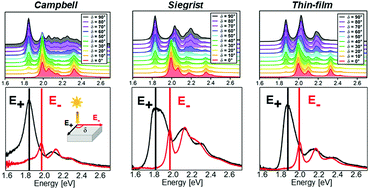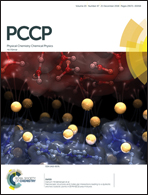Polarized absorbance and Davydov splitting in bulk and thin-film pentacene polymorphs
Abstract
Pentacene is one of the most studied organic materials and in particular its optical properties have been the subject of intense research during the last two decades. In spite of such a widespread interest and of the extensive knowledge achieved so far, a number of issues are still debated. One of the most relevant questions concerns the role of polymorphism and how it affects the lowest-energy exciton, which appears in the visible region and is subject to a sizable Davydov splitting. We address this problem in a combined theoretical and experimental work, where the optical absorption properties of three pentacene polymorphs are investigated within the whole energy range of visible light. Optical spectra computed from first principles in the framework of many-body perturbation theory are directly compared with the polarization-resolved absorbance, measured for three different pentacene phases (the two bulk polymorphs and the thin-film phase). In this way, we unambiguously identify the two Davydov components of the first exciton and the optical fingerprints of each considered phase. With very good agreement between theory and experiment, we show that all polymorphs exhibit common features at the absorption onset, while phase-dependent characteristics appear only above 2 eV. We discuss the character of the lowest-lying singlet and triplet excitons, including dark ones, highlighting the contributions from the electronic bands and the role of the electron–hole interaction and of the local-field effects.



 Please wait while we load your content...
Please wait while we load your content...